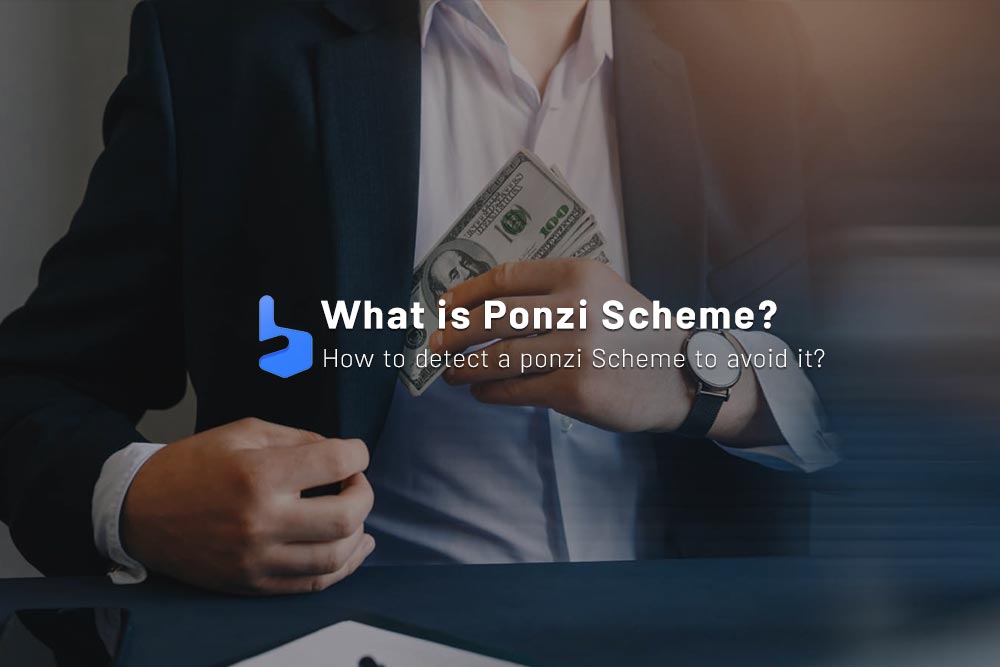What you are about to read:
Ponzi Scheme is a type of investment scam that involves promising high returns to investors using the capital from subsequent investors. This type of fraud is named after Charles Ponzi, who became notorious in the early 1900s due to his scheme. He resemble pyramid schemes in that both rely on a constant flow of new investors to pay previous investors, but they differ in structure and complexity. This concept has existed for over a century and continues to pose a threat to investors. Here, we intend to examine this important discussion in the investment market with Brokerland.
What is a Ponzi Scheme?
The fundamental premise of a Ponzi scheme is simple: the fraudster promises a high return on investment to investors. To attract investors, the fraudster usually makes bold claims about the investment opportunity and offers high returns with little to no risk. Investments can take various forms, including stocks, real estate, or even a new product or service.
Once the fraudster attracts enough investors, they use the money from new investors to start paying returns to initial investors. These payments create the illusion that the investment is legitimate and successful, further encouraging more individuals to invest. This scheme only works as long as there is a continuous flow of new investors putting money into the investment. When there are no more new investors, the scheme collapses, and initial investors lose their money.
One of the most famous Ponzi schemes was executed by Charles Ponzi in the early 1900s. His scheme promised a 50% return in 90 days by exploiting the difference in exchange rates. However, he did not actually invest the money in any legitimate venture. Instead, he used funds from new investors to pay returns to previous investors. Ponzi’s scheme was initially successful, and he became a millionaire within a few months. However, with a dwindling number of new investors, his scheme fell apart, and he was eventually arrested and sentenced to prison.
Detecting a Ponzi Scheme
Identifying a Ponzi scheme can be challenging as they often appear legally sound on the surface. Fraudsters may use misleading documents such as investment reports or financial statements to make the investment seem legitimate. They may also exploit satisfied investor testimonials to create credibility. Additionally, many of these schemes operate in the gray area between legitimate investments and blatant fraud, making it difficult for regulators to identify and legally pursue them.
One key feature of a Ponzi scheme is the promise of high returns with no risk. In reality, no investment can guarantee high returns without some level of risk. If an investment opportunity seems too good to be true, it probably is. Furthermore, investors should exercise caution regarding any investment opportunity that requires a large initial investment or promises significantly higher returns than market rates.
Another dangerous and indicative red flag is when the understanding or explanation of the investment is difficult. If an investment opportunity is overly complex or the fraudster cannot provide clear and concise information about how the investment works, it may be a sign of a fraudulent scheme. Investors should always seek accurate information about an investment opportunity and dedicate time to thorough research before investing any money.
Investors should also be wary of any investment opportunity heavily reliant on attracting new investors. Both Ponzi and pyramid schemes require a continuous influx of new investors to pay returns to previous investors. If the focus of an investment opportunity is more on attracting new investors rather than actual investment, it may be a sign of a Ponzi scheme.
In addition to being aware of warning signs, investors can take necessary actions to protect themselves. This includes conducting thorough research on the investment opportunity, verifying the credibility of the person offering the investment, and seeking advice from a trusted financial advisor. Investors should also be cautious of unsolicited investment offers, especially if these offers come from someone they do not know.
If a suspicious investor becomes a victim of a Ponzi scheme, they should immediately report it to the relevant authorities. This includes local law enforcement, the Securities and Exchange Commission (SEC), and the Financial Industry Regulatory Authority (FINRA). Reporting such schemes can help prevent others from falling victim to fraud and may also assist investors in recovering some of their lost funds.
In many cases, investors who fall victim to a scheme may not be able to recover their lost funds. This is because the fraudster has typically spent or transferred the money offshore to avoid detection. However, there are instances where investors have been able to recover at least some of their money through legal complaints or government repayment programs.
To avoid falling victim to these schemes, investors should remain vigilant and be skeptical of any investment opportunity that seems too good to be true. They should also take the time to conduct thorough research on the investment and seek advice from a trusted financial advisor. By doing so, investors can protect themselves and their money from falling prey to such investment fraud.
well-known Ponzi schemes
Several well-known Ponzi schemes have made headlines worldwide. Here are a few examples:
Bernie Madoff
Perhaps the most infamous Ponzi scheme in history, Bernie Madoff’s scheme is estimated to have defrauded billions of dollars from investors. Madoff’s scheme operated for over two decades, and he used new investors’ money to pay returns to previous investors. Madoff was eventually arrested and sentenced to 150 years in prison.
Tom Petters
Tom Petters orchestrated a Ponzi scheme involving the sale of consumer electronics to retail vendors. Petters promised high returns on investments, but he actually used money from new investors to pay off previous investors. The Petters scheme is estimated to have defrauded investors of over $3.7 billion. He was eventually convicted and sentenced to 50 years in prison.
Robert Allen Stanford
Robert Allen Stanford executed a Ponzi scheme through his company, Stanford Financial Group. Stanford promised high returns on investments in certificates of deposit (CDs) and other investments, but he actually used money from new investors to pay off previous investors. The Stanford scheme is estimated to have defrauded investors of over $7 billion. He was ultimately convicted and sentenced to 110 years in prison.
Charles Ponzi
Charles Ponzi’s scheme is perhaps the most famous Ponzi scheme in history, named after the man himself. Charles promised investors high returns from investing in international postage stamp coupons, claiming they could be purchased cheaply in Europe and sold for a profit in the United States. However, he did not actually invest the money in postage stamp coupons. Instead, he used funds from new investors to pay off previous investors. This scheme collapsed in 1920, and he was eventually convicted and sentenced to prison.
These are just examples of Ponzi schemes that have been uncovered over the years. While the specific details of each scheme may vary, the fundamental structure and characteristics of a scheme remain the same. Investors should always be aware of warning signs of a Ponzi scheme and take measures to protect themselves from fraud in investment.
Summary
Ponzi schemes are a type of investment fraud that involves promising high returns to investors using funds from new investors. The name comes from Charles Ponzi, who became infamous for his scheme in the early 1900s. These schemes rely on a constant influx of new investors to pay off previous investors, and detecting them can be challenging as they often appear legitimate. Investors should always be aware of warning signs, conduct necessary due diligence, and report any suspicious investment opportunities to the relevant authorities to protect themselves from such schemes.















